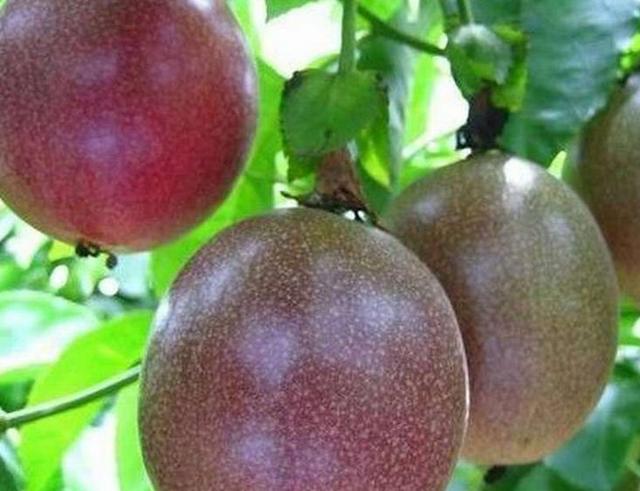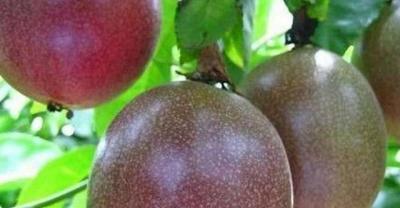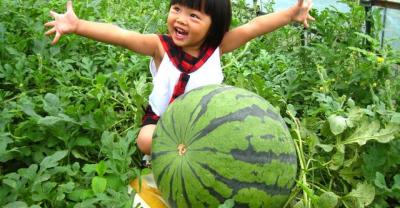Planting techniques of passion fruit (passion fruit) in Datian County
Planting techniques of passion fruit (passion fruit) in Datian County
1 selection of nursery land and cutting seedlings
The nursery had better choose the plots with high content of organic matter, loose soil and convenient management to raise seedlings. The method of raising seedlings can be raised by seeds and cuttings. Cutting seedlings can maintain the excellent characteristics of motherhood, neat growth, early fruit, uniform fruit, high yield and excellent quality. Therefore, the time of using cuttage to raise seedlings should be grasped after the harvest in autumn. It is best to use river sand as the medium for cutting seedlings, because the river sand has water conservation, air permeability and less bacteria. It is best to choose one-year-old branches for cutting branches, and the survival rate is the highest. The cuttings were cut into small segments, each with 2-3 bud holes, and the lower end was cut into an oblique mouth, which is similar to the cutting method of sweet potato seedlings in Fujian Province. When inserting sand, you should make a clear distinction between the beginning and the end, do not insert it backwards, and use rooting powder if possible. Old and tender wood cuttings are not easy to survive. When cutting seedlings, drainage should be smooth, and pay attention to water management. Attention should be paid to the prevention of cold in the seedbed in winter. A small plastic arch shed can be built to protect against cold and heat preservation, but pay attention to ventilation.

(2) site preparation, excavation and planting
Passion fruit can be planted all the year round. It is better for planting border with high ridge and wide border, for field scaffolding cultivation with row spacing of 2.5m and plant spacing of 3 m, about 70 plants per 667m2 species, and for slope wasteland with unilateral hedgerow cultivation, about 100 plants per 667m2. But the planting is the best from March to April. When preparing the soil, we should first turn the soil deeply and dig a good planting hole, so that the soil can be further matured and sunburned, which is helpful to reduce the pathogenic bacteria in the soil. The pre-fermented farm manure can be put into the hole as the base fertilizer, and then planted on the pier. If the soil moisture is insufficient, the root water can be irrigated. After the seedlings survive, they should be supported by scaffolds in time, and the axillary buds should be removed, leaving only the terminal buds of the main vines. At the same time, fix the main vine on the bracket so that the plant can climb onto the scaffolding as soon as possible. Ditches should be dug well and deep to facilitate drainage in the rainy season. Because, passion fruit is particularly afraid of waterlogging, once stagnant water will cause plant root rot, light will affect the yield, heavy will cause plant death. However, if the soil is too dry, it should be irrigated in time. Therefore, a reasonable grasp of soil moisture is the key to success.

3. Construction of scaffolding
Because passion fruit is a vine, it needs to be supported by scaffolding in the process of its growth. If it is allowed to grow freely, it will result in little or no result. Therefore, it is necessary to build the scaffolding in time to create a good environment for passion fruit growth. The form of scaffolding is generally flat-top type, the height of scaffolding is 1.8-2m, and the top of scaffolding is woven into a well-shaped shape with iron wire or nylon rope.
4 fertilization and daily management
The newly planted passion fruit mainly applied nitrogen fertilizer in the early stage to promote plant growth. The roots began to grow 10-15 days after planting, 0.5% diluted urea water could be applied, and then every 20-25 days. In the middle and later stage, it is mainly phosphorus and potassium fertilizer, and it is best to apply compound fertilizer, each 15~20kg, in the ditch before and after the beginning of spring. In the flowering and fruiting period, topdressing should be carried out properly, and fertilization should be applied every 20 days, and each plant should be applied 0.5kg or so. Pruning in time can promote the fruiting mother vine to produce more multi-stage branches and increase the number of buds and fruits. There are few diseases and insect pests in passion fruit, and there are mainly quenching disease, mosaic disease, blight, stem rot and anthracnose in seedling stage. The main measures to prevent and control diseases in production are as follows: (1) do a good job of drainage. To prevent waterlogging in orchards, especially in some low-lying orchards, it is necessary to prevent local stagnant water, resulting in rotten roots and diseases. (2) in early spring, when the fruit was harvested, the diseased branches, leaves and fruits were cleared out of the orchard and burned, so as to reduce the number of pathogenic microorganisms and disinfect the orchard. (3) after the disease was found, 50% carbendazim 500x solution could be used to control seedling quenching disease, and methyl topiramate 1000 times solution could be used to control stem base rot and anthracnose.
5 conclusion
In the whole process of planting and management, special attention should be paid to the effects of water and low temperature on passion fruit plants. When there is frost in the weather, it will cause frostbite to the plants. Therefore, growers should pay special attention in production. In the actual production process, the method of directly replacing new seedlings in the second year should be adopted to prevent the outbreak of the epidemic disease in the second year.

- Prev

Okra planting technology is very simple.
I don't know when okra became popular and became a high-end health vegetable pursued by people all over the world, mainly because okra is rich in vitamin C and soluble fiber.
- Next

Rejuvenation of weak seedlings in Orchid planting
It is difficult to rejuvenate the weak seedlings of orchids. Practice has proved that in order to rejuvenate weak seedlings, all measures must be in line with its growth law.
Related
- Fuxing push coffee new agricultural production and marketing class: lack of small-scale processing plants
- Jujube rice field leisure farm deep ploughing Yilan for five years to create a space for organic food and play
- Nongyu Farm-A trial of organic papaya for brave women with advanced technology
- Four points for attention in the prevention and control of diseases and insect pests of edible fungi
- How to add nutrient solution to Edible Fungi
- Is there any good way to control edible fungus mites?
- Open Inoculation Technology of Edible Fungi
- Is there any clever way to use fertilizer for edible fungus in winter?
- What agents are used to kill the pathogens of edible fungi in the mushroom shed?
- Rapid drying of Edible Fungi

